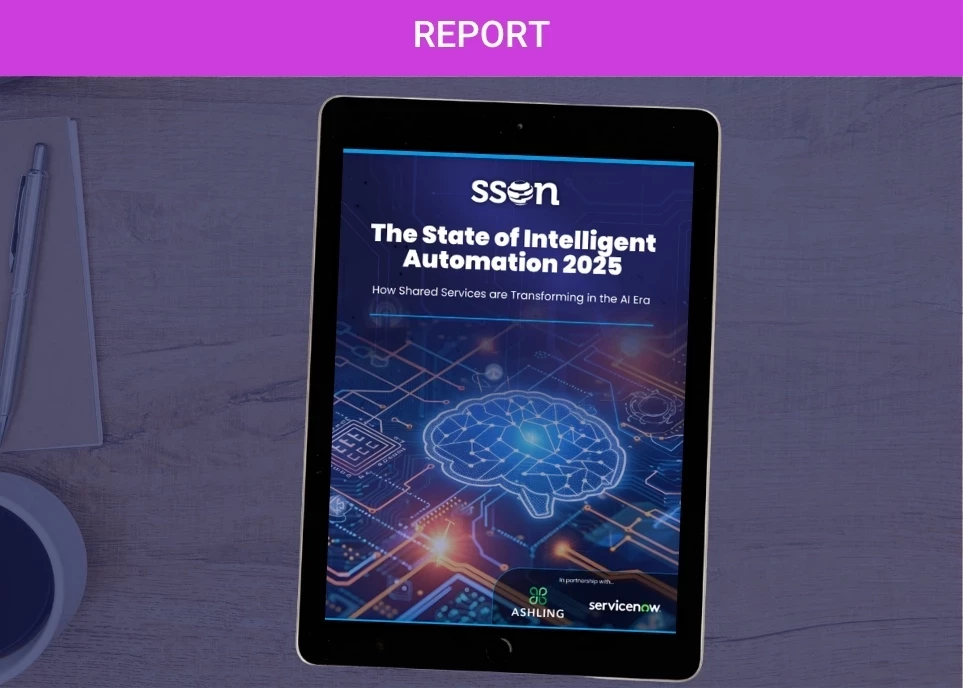Could You Use 1000 Extra Workers? Automation Is Your Holy Grail, But Avoid The Pitfalls First
Add bookmark
It’s the golden question for any enterprise seeking efficiency that’s currently not within their capacity. But is the answer closer than they realise?
It’s a proven fact that Robotic Process Automation (RPA) delivers huge benefits to organisations that get it right. But implementing the technology is not as simple as it looks - and RPA pitfalls abound for companies without the right expertise in their corner.
According to an extensive survey conducted by SSON in 2020, although 46% of organisations have started an RPA journey and 23% are scaling or moving onto additional solutions, only 15% have managed to scale RPA successfully. Nearly half of the RPA implementations were stalling, and therefore not meeting their ROI expectations. For full insights on the survey, take a look at SSON's Global State of Intelligent Automation Market Report 2020.
In the post-pandemic world, a digital transformation that can optimise costs while increasing productivity, agility, and resiliency is in high demand – especially if it doesn’t require a pricey overhaul of legacy systems. Recent Forrester Research predicts automation such as RPA will be key to helping businesses prosper in the “new normal” - reducing dependencies on manual processes and individuals, and providing more timely access to actionable data and insights.
For most business leaders, the question is no longer whether they should implement RPA – but how to get it right?
Why is RPA scaling so hard?
Several common RPA pitfalls lead to failure or slow adoption of the technology. Topping the list are unrealistic expectations, automating the wrong processes, missing critical RPA skillsets, and the wrong implementation partner.
Companies tend to underestimate the complexity of their business processes - and bots can malfunction without an RPA design team that knows how to anticipate and prepare for most process exceptions. Unresolved process exceptions rank among the biggest RPA challenges, prompting frustrated users to revert to manual work.
Choosing an RPA partner with a transparent risk-sharing model helps companies control costs by establishing the price tag upfront. Not only do these providers ensure companies derive the most value from their automation – which drives organisational support - but they are incentivised to deliver a quality product on time because they eat the margin if they don’t.
Aligning the leadership team behind an automation end-goal and strategic vision early on is also key to the ability to scale RPA successfully. An effective POC can be dazzling, and it’s easy for organisations to start automating for the sake of automating.
Whether the goal is cost savings, quality control, real-time reporting to achieve one version of the truth, or another business driver, crystallising a clear vision at the start keeps an RPA program from imploding because it tried to accomplish too much or automated processes that didn’t make sense.
Hard-to-find resources top RPA challenges
Failing to build an RPA Center of Excellence (CoE) with the right implementation capabilities for the first wave of automation is another common RPA pitfall. Whether an organisation keeps its journey in-house, hires a third-party provider, or opts for a hybrid solution, the skillsets required to imagine, build, and maintain a company’s process robots never waver. An effective CoE includes a long list of critical roles, from Automation Champion to Solution Architect to Change Manager.
But the newness of RPA technology combined with the national shortage of skilled IT workers can make it difficult for companies to staff scarce and costly RPA talent in-house. It’s also hard to justify the cost of building a CoE for organisations starting a POC or without a large automation pipeline. So too often, companies cut corners and set their journey up for failure.
For most, a hybrid model that leverages the resources, knowledge, and experience of a reputable provider with the business expertise of in-house staff ensures the best business outcome.
Neglecting the need for a separate support structure is another significant obstacle to RPA scaling. Robots aren’t a “set it and forget it” investment – they inevitably require some tweaking to adjust to unexpected process exceptions.
But many organisations wrongly assume their developers will also maintain the bots without contemplating bandwidth or skillsets. As a result, broken bots languish before they are fixed, and organisational trust in the technology dissipates.
Avoid RPA pitfalls that can derail your automation journey
At a time when RPA scaling stands out as a unicorn, best practices lead to success. Carefully selecting processes that can deliver quick wins at the start of an automation journey builds trust and credibility, eliminating the scepticism that often accompanies new technology.
Hyperautomation can amplify RPA scaling as well. A hot buzzword on the IT landscape, hyperautomation integrates supporting technologies like Process Mining and Machine Learning with RPA.
It’s nearly impossible to find another transformation that achieves the same return on investment as RPA – as long as it’s implemented effectively. It is, however, easy to get bogged down in individual processes, tasks and cost-savings when looking at what to automate next, however the truly cutting-edge organizations think more creatively.
Keen to learn more? This is your opportunity to join 2500+ of your peers and 30+ industry leading speakers at the Intelligent Automation World Series digital conference on 2-4 February. Join us as we uncover how shared services leaders can conquer scaling, hyperautomation, industrialisation, process discovery and digital twins; critical steps in taking your intelligent automation initiatives into the stratosphere.
Register your place here.





























